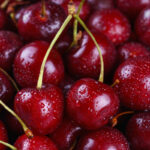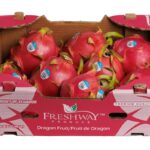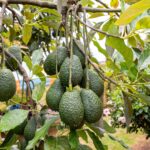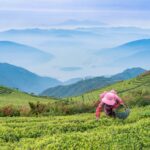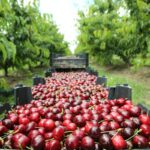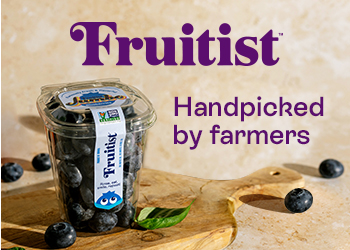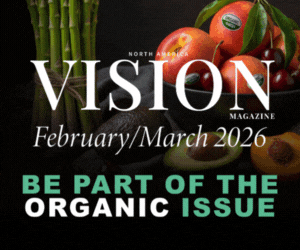USDA outlook indicates improved weather and higher grower and consumer prices in 2025

The USDA has released its fruit and tree nut forecast for March 2025, which covers weather forecasts for this year and potential fruit grower and consumer prices for various categories.
The outlook notes that, according to the U.S. Department of Commerce’s National Oceanic and Atmospheric Administration’s (NOAA) National Centers for Environmental Information (NCEI), 2024 was the warmest year in the contiguous United States since 1895.
Although it was also the third wettest year, the summer was relatively dry in fruit and tree nut-producing States like California and Washington. Throughout the late summer, extreme heat strained crops, and drought conditions intensified.
Forecast for spring 2025
The weather outlook for spring 2025 is mixed, as NOAA forecasts that northern California will remain drought-free but that drought will persist in southern parts of the State.
Additionally, though most of western Washington is currently in drought, NOAA expects conditions to ease in the spring.
Water availability will be essential in both States, as it represents more than 80% of fruit and tree nut value, particularly if summer temperatures reach last year’s heights.
California
Large parts of California, especially the southern part of the state, suffered from drought conditions in 2024. According to U.S. Drought Monitor ratings, all the land in the southeast interior was in moderate (D1), severe (D2), or extreme (D3) drought as of February 2025.
Luckily, conditions were less severe in the Sacramento Valley and San Joaquin Valley regions, where many fruits and tree nuts are grown.
In the Sacramento Valley, the percentage of abnormally dry (D0) land rose from 0 to 100 percent from July 2024 to October 2024. However, low temperatures and higher-than-average precipitation levels helped ease drought conditions in November.
Currently, conditions in the Sacramento and San Joaquin valleys mirror those elsewhere in the State; it is warmer and drier in the south than in the north.
As of March 26, 2024, the California Department of Water Resources (DWR) reported that snowpack in the Sierra Nevada range was 96% of normal, year to date. Nonetheless, water allocations are on track to improve from 2023/24.
The DWR’s State Water Project has allocated 40% of requested water supplies, a ten-percentage-point increase over the 30 percent allocated in March 2024.
Washington state conditions
In February 2024, the Washington Department of Ecology warned residents to prepare for a dry spring in the western state. The first quarter of water year 2023/24 had been the sixth driest since 1895.
High temperatures in December 2023 increased the precipitation falling as rain, eroding Washington’s snowpack and decreasing the amount of water available in the spring of 2024.
The Washington Department of Ecology declared a statewide drought in April 2024 due to low snowpack and a warm and dry forecast; a drought emergency was declared in July.
Drought was worst in August 2024, when almost 90% of Washington was in drought, more than 50% of which was categorized as moderate to extreme. The first quarter of 2024/25 was 1.4 degrees above normal and 12% drier than usual.
Nonetheless, temperatures are expected to be lower than usual this spring, and precipitation is expected to be higher than normal. If so, Washington will be drought-free at the start of the growing season.
However, reservoirs in the Yakima Basin are currently at their third lowest level since 1971, at 38% of the average for this time of year. The outlook notes that less irrigation water will be available this spring if reservoir levels remain low.
Grower prices forecast
In January 2025, the index of prices received by growers for fruit and tree nuts was 139 (2011=100), about 9% higher than January 2024 but 8% lower than January 2023. As in prior years, prices received by growers in 2024 increased in the late spring and early summer (June through August).
This trend partially stems from the seasonal production of fruit and tree nuts. Grower prices for apples, strawberries, and grapefruit were higher in early 2025 than in early 2024. Lower year-over-year volumes for nut crops like almonds, walnuts, and pistachios also have put upward pressure on grower prices.
Consumer prices
The Consumer Price Index (CPI) for fresh fruit was reported at 418.9 (1982–84=100) in February 2025, up 2% from the same time last year. Apples and bananas are two of the most heavily weighted prices in the fresh fruit CPI, accounting for about 34% of the index relative importance—more than three times the weight of citrus fruit CPI (11%).
The CPI for apples, which reflects changes in apple retail prices, was up 3.6 percent in February 2025 compared with February 2024 but lower than the same month in 2022 and 2023.
A larger apple harvest in fall 2023 put downward pressure on retail prices, which dipped to a 3-year low in April 2024. In February 2025, banana average retail prices fell below year-ago prices for a decrease of 1.3%.
In the first 2 months of 2025, USDA Agricultural Marketing Service (AMS) banana shipment volumes were higher than last year, despite slightly lower volumes from major suppliers Guatemala, Costa Rica, and Ecuador through the end of February.

















